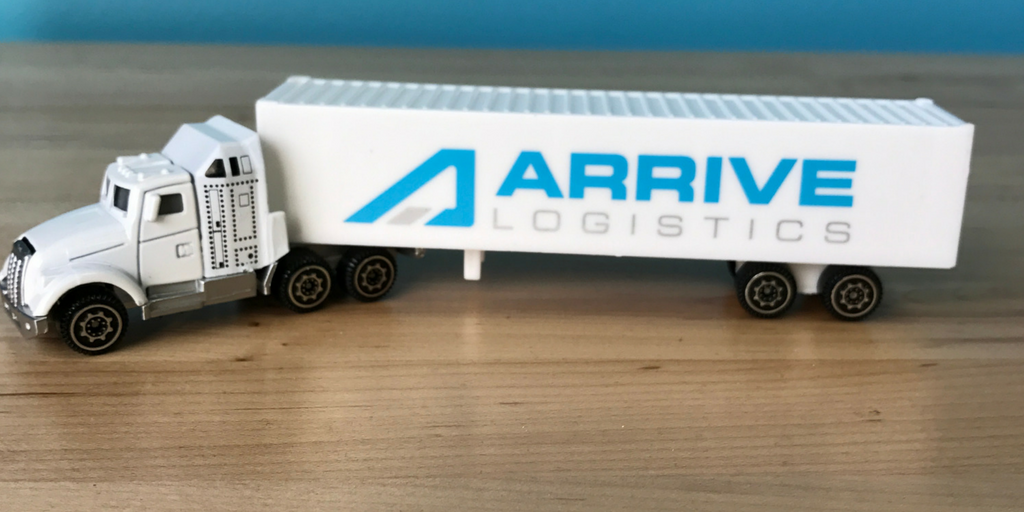


Freight revenue and volume grew single digits year-over-year in the second quarter, but margins shrunk during the same period because spot market rates were higher than mid-2016, according to the Transportation Intermediaries Association’s quarterly 3PL Market Report.
Total truckload shipments rose 6% to 916,229, and the invoice amount per load improved 3.8% to $1,474. However, top-line revenue growth didn’t translate down the income statement because margins went down 220 basis points to 14.4% on average.
Truckload freight constituted 63% of all freight brokerage in the second quarter.
Shipments at large brokers (more than $100 million in revenue) went up 6.6% to 773,756, but margins dropped 230 basis points to 13.9%. Shipments at medium-size brokers ($16 million to $100 million) improved 20% to 119,967, but margins deteriorated 280 basis points to 14.9%. Shipments at small brokers plunged 41% to 22,506 and margins declined 30 basis points to 16.5%.
Margin compression tends to affect large brokers when the spot market is robust because they’re more likely to negotiate annual contracts with shippers than relatively unknown small brokers.
One example is C.H. Robinson Worldwide, which ranks No. 5 on the Transport Topics Top 50 list of the largest logistics companies in North America. Gross revenue grew 12% year-over-year to $3.7 billion, but the net after transportation costs dropped 3.4% to $573.8 million and margins deteriorated 260 basis points to 15.4%.
Cowan Logistics realized the downside of being contract freight-heavy one year ago, but reversed its fortune in 2017.
“We took a hard look and recognized that we were very contract-heavy, so we took it on the chin last year in May, June and July. Now we’ve diversified our book of business,” Cowan Logistics President Dan Evans told TT. “This year, we took advantage of some spot market opportunities that we weren’t positioned to do previously, and so we overcame margin pressure on the contract side with some produce and other seasonal business.”
In the second quarter, revenue increased 26% and load count was up 15% year-over-year and margins grew about 150 basis points. In July, Evans said margins were up 200 basis points. The Baltimore company ranks No. 47 on the TT logistics 50.
For Leonard’s Express, second-quarter load counts went up and revenue increased 4.8% year-over-year, but the margins deteriorated nearly 200 basis points. The freight broker, located outside of Rochester, N.Y., ranks No. 60 on the sector list of top freight brokerage firms.
“Our top line revenue has been strong since May, but we had to scratch and claw on margins to end [the second quarter] even to slightly down year-over-year,” Chief Marketing Officer Michael Riccio said. “We’re going to continue have to battle hard on margins for the rest of the year with the hurricane, ELDs and fall harvests. Being in upstate New York, we’ll see more surges on pricing in the temperature-controlled side through October.”
Bay and Bay Transportation load counts and revenue were up single digits, but margins were down a few hundred basis pounds. The Eagan, Minn., company is No. 61 on the freight brokerage list.
“We track our margins per load that we make on spot business and contract business,” CEO Sam Anderson said. “Those two have been far, far apart. Our margins on contract business are at some of the lowest points in the last four or five years. We’re raising prices and informing our customers of options in this changing marketplace.”
Arrive Logistics underwent rapid growth in the second quarter as it attempts to climb up the list of top freight brokers, currently at No. 73. Revenue surged 102% year-over-year, and load counts also are exponentially growing, but margins contracted 180 basis points in the prior quarter. Arrive is based in Austin, Texas.
“Because Arrive is in a hypergrowth phase we have to ensure we have more carrier capacity than freight to ensure we can service our customers. Finding that balance allows us to continue to grow at an exponential rate,” President Eric Dunigan said. “We expect capacity to continue to tighten into 2018, which is why we plan to hire 250 new employees over the next 12 months.”
Intermodal freight brokers also experienced challenges in the second quarter. Shipments grew 4.5% year-over-year to 267,308, but invoice per load fell 9% to $2,199 and margins fell 110 basis points to 8.9%.
Results in the less-than-truckload sector were slightly better than the other modes. Shipments were up 8.2% to 131,537, and margins improved 100 basis points to 22.3%. However, invoice amounts per load declined 1.3% to $447 on average.
Intermodal and LTL account for 19% and 9%, respectively, of all freight brokerage in the report.
Originally posted on Transportation Topics.
www.ttnews.com/articles/brokers-move-more-truckload-freight-second-quarter